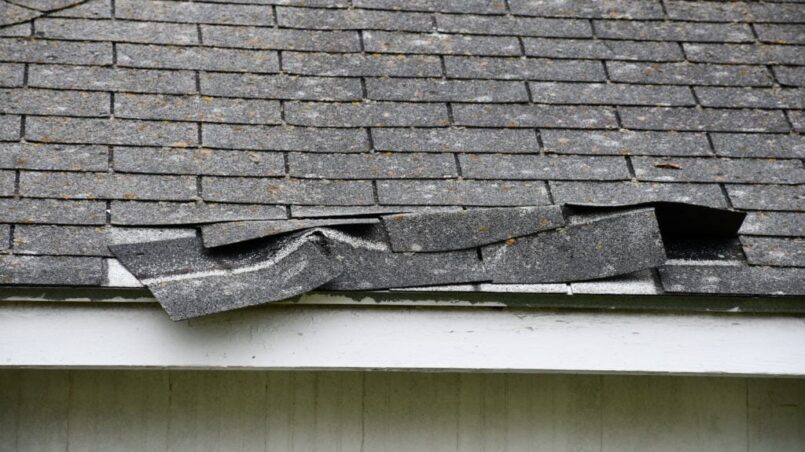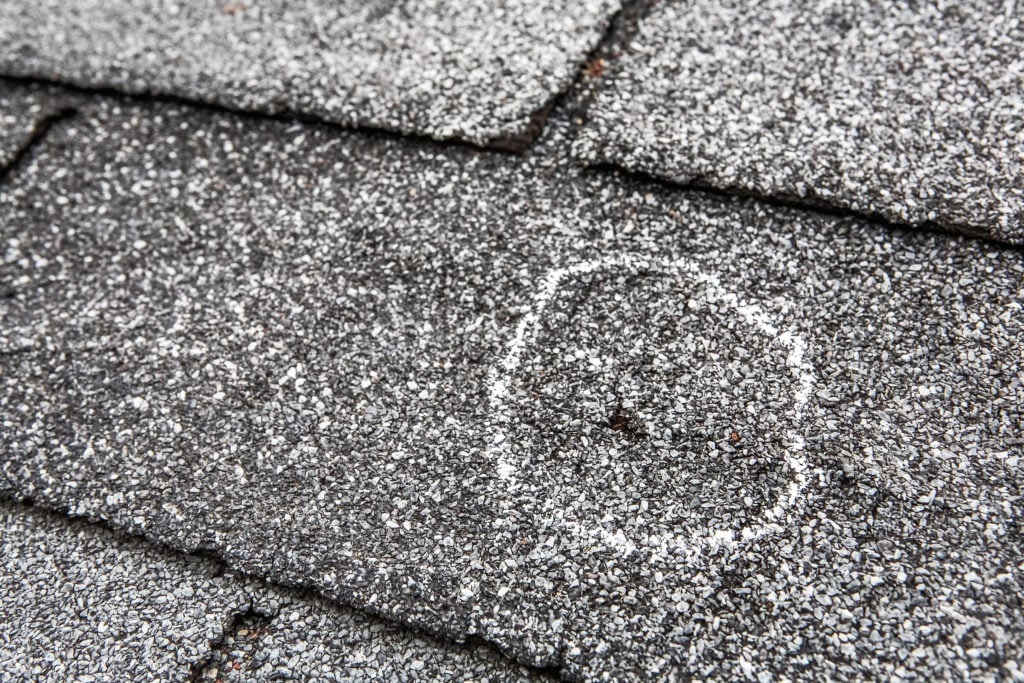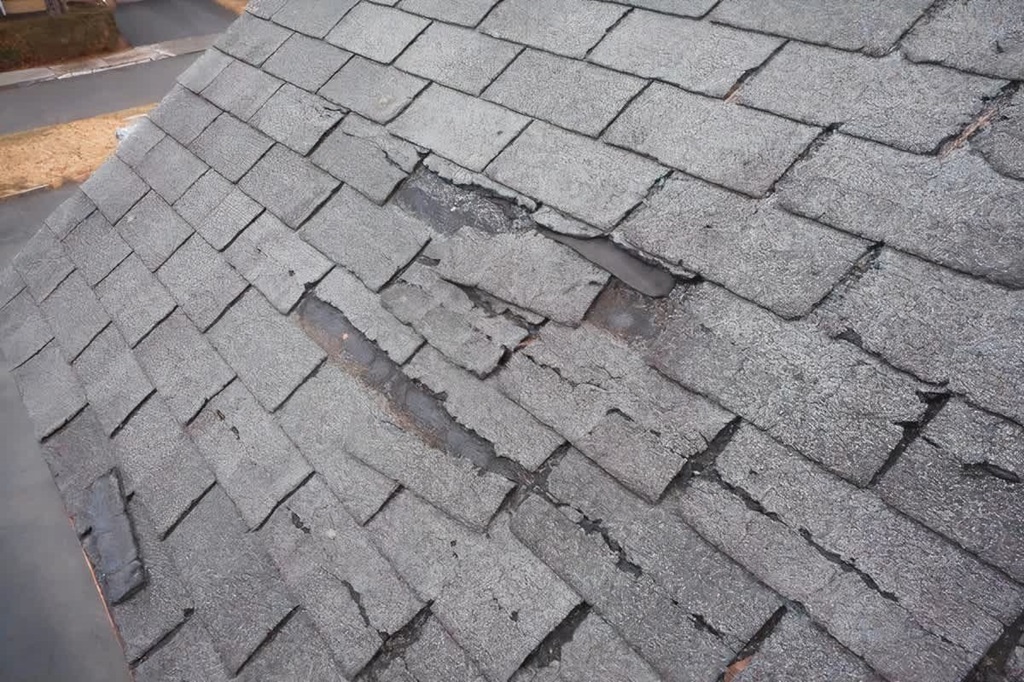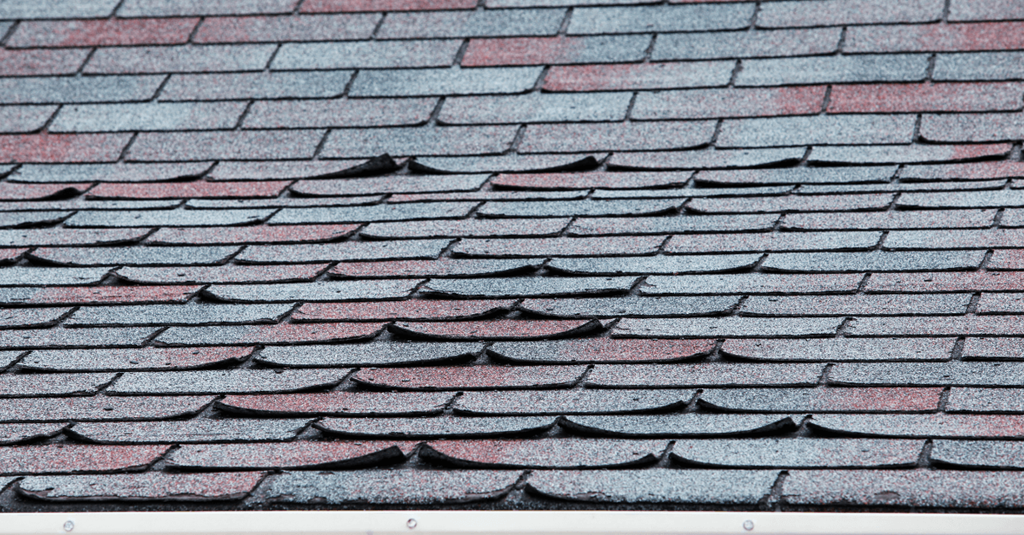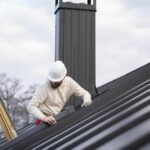Getting hit by a hailstorm can do some severe damage to your roof. Unfortunately, that damage isn’t always apparent right away. Hail can cause issues like loose or missing shingles, dents, cracked tiles, and damaged underlayment that you can’t see just by looking at your roof from the ground. Don’t assume your roof escaped unscathed if your home gets pelted with hail. Here’s how to tell if roof has hail damage.
Examine Your Roof Up Close
The first step in checking for hail damage is getting up on the roof. Bring a ladder and climb up for a close visual inspection. Look for any of the following signs:
Missing or Loose Shingles
Hail can knock shingles completely off or loosen them so they flap in the wind. Stroll across your entire roof, checking for missing shingles or areas where shingles look loose, cracked, or curled up. Use a rubber mallet to tap down any loose ones. Damaged shingles that are no longer adequately attached need to be replaced.
Dents or Markings
Check the surface of your shingles closely for minor dings or divots from hail hits. Asphalt and fiberglass shingles often show markings or dimpling from being pelted with hailstones. Look near your roof’s edges and high points, as hail strikes these areas hardest.
Damaged Tiles
Tile roofs can also be cracked or chipped by hail. Look for any tiles that are cracked or missing pieces. Tap tiles to check for any that sound hollow or broken. Damaged clay or concrete tiles should be replaced.
Bent Flashing
Metal flashing gets dented easily. Check areas like chimneys, vents, and valleys for flashing that looks bent, creased, or dented from hail strikes. Even minor dents are signs that hail impacted your roof.
Cracked Vent Covers
Plastic vent covers can crack if hit hard enough by hail. Look for broken or cracked roof vent covers, especially near the peak. Damaged vent covers need to be replaced to prevent leaks.
Damage Around Protrusions
Areas that stick up off your roof, like skylights and vents, are prime targets for hail damage. Make sure to thoroughly inspect these raised sections and the area immediately surrounding them for impacts.
Check the Underside of Overhangs
One area that’s easy to miss when checking for hail damage is on the underside of roof overhangs. Go around the entire perimeter of your house and carefully inspect the bottom of the drip edge overhang wherever it sticks out past the exterior walls. Hail dents on the overhang indicate your main roof likely also sustained some damage.
Inspect for Damage from the Ground with Binoculars
After climbing on your roof for a close inspection, you can also check certain roof parts from the ground with binoculars or a zoom lens. Focus on the edges, ridges, vents, skylights, and other raised areas. Binoculars make it easier to spot subtle dents or markings on shingles that you may have overlooked when up on the roof.
Check Around the House for Signs of Impacts
Hail doesn’t just hit roofs. Look around the rest of your house exterior for signs of hail damage. If you see hail marks or dents on siding, window trim, vehicles, or other items left outside, it’s safe to assume the roof also endured some impacts.
Feel for Damage on Metal Roofs
Metal roofs won’t have noticeable dents or markings from hail hits. Still, hailstones can cause unseen buckling and pitting beneath the surface. Walk on metal roofs and feel for any unevenness or swelling indicating potential hidden damage under the metal panels. Also, check metal flashing and trim pieces for any spots that feel inconsistently smooth or bumpy compared to the surrounding areas.
Notice Any Leaks After Storms
While hail rarely causes leaks, cumulative damage to shingles and tiles can eventually lead to water intrusion after subsequent rainstorms. Look for leaky ceilings or wet spots that appear after heavy rain, especially if your area recently experienced hailstorms. Leaks near vents, skylights, and chimneys may indicate hail-damaged flashing.
Call Your Insurance Company
Once you’ve thoroughly inspected for storm damage, call your insurance company if you find evidence of hail impacts. Most standard home insurance policies cover hail damage. An insurance adjuster can inspect your roof and document any damage to get the claim process started. Make temporary repairs to prevent further water damage before permanent repairs.
Confirm Damage with an Inspection by a Roofer
Get professional confirmation for the best chance of having hail damage approved by insurance. A certified residential roofer has the expertise and experience to identify and document even subtle signs of hail impacts. They can inspect your roof up close, determine the full extent of damage, and provide the evidence needed to move your insurance claim forward.
Don’t Delay Getting a Hail Damage Inspection
It’s essential to inspect your roof immediately after a major hailstorm. Hail damage tends to be evident for the first 6-12 months. After that, the effects fade as wind, rain, and sun slowly conceal the evidence. Insurance companies know this and may try to delay inspection, hoping the proof of damage becomes less definitive. Don’t let this happen to you. Call for professional inspection immediately after noticing any troubling signs or hearing reports of hail in your area.
Be Wary of Storm Chaser Scams
Unfortunately, some unscrupulous contractors take advantage of hailstorms. Known as “storm chasers,” they swoop in after a hail event and immediately scare homeowners into signing overpriced roofing contracts. They count on the urgency of storm damage to make sales. Any contractor going door-to-door promising extreme urgency, substantial insurance discounts, or free roof upgrades is likely a scammer. Always inspect and get quotes from reputable local companies before moving forward with repairs.
Consider a Hail-Resistant Roof for the Future
If you live in an area that sees regular hailstorms, you may want to switch to a hail-resistant roof when it comes time to re-roof. Options like rubber slate or Class 4 impact-rated asphalt shingles can better withstand typical hailstone impacts. Metal roofs are also durable against hail damage when installed over solid decking using hail-safe fasteners. A professional roofer can advise you on the most hail-resistant roofing choices for your specific climate and home.
Conclusion
Roof damage from hail often goes undetected at first glance. Yet even minor dents and dimples can add up to severe impacts. Don’t just assume you escaped unscathed after a major hailstorm. Carefully inspect your roof and look for more subtle signs you may not notice from the ground. If unsure, always err on caution and call in a professional residential roofer to identify any damage before it’s too late.
FAQs
How soon after a hailstorm should I inspect my roof?
Inspect your roof as soon as possible, preferably within 3-5 days after a hail event. Hail damage is most accessible to detect right after the storm before the evidence starts fading. Don’t delay or assume your roof wasn’t hit just because it’s not leaking.
What parts of my roof are most likely to see hail damage?
Hail most often hits areas like ridges, edges, protrusions, and overhangs. The pitch also impacts, with steeper roofs sustaining more damage near the top than at the eaves.
How can I check for hail damage from the ground?
After your up-close inspection, use binoculars or zoom lenses to inspect from the ground. Look for missing, loose, or cracked shingles, dents in metal flashing, and other signs of damage on raised sections and roof edges.
Does minor hail damage need immediate repair?
Not necessarily. Minor damage, like a few small dents or missing granules, typically doesn’t impact performance or leak potential. You can likely wait until it’s time for roof replacement rather than making repairs now.
How long after a hailstorm do I have to file an insurance claim?
Insurance claim deadlines vary but are usually between 6-24 months after the hail event. Don’t delay since the evidence of hail damage fades over time, making approval more difficult.
Does hail damage to my roof also cover damage to my siding, gutters, etc?
It depends on your specific insurance policy. Most cover hail damage to any part of your home, including siding, windows, and gutters. Talk with your insurance agent to confirm what is included in your policy.

